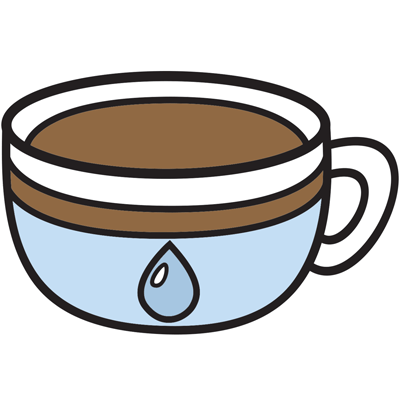Espresso with Water
Managing Bypass Accurately and Safely
Bypass in coffee refers to water that hasn’t been passed through the coffee bed and that is added to a coffee drink. This practice of adding water is common in the preparation of large-scale, batch-brewed filter coffee and in americanos and long blacks (in Australia and New Zealand). Bypass becomes necessary when you need to make a longer, lower-strength drink without passing too much water through the coffee bed. Simply running more water through the coffee bed with filter coffee or espresso usually means taking too much out of the coffee, which makes it taste dry and bitter. Bypass instead treats the espresso as if it were a cordial, and water can be added to meet any strength requirement. When you make drinks with concentrate, not everyone likes the same strength, so the practice of making both americanos (with more water) and long blacks (with a small amount of water) has emerged in many coffee shops.
Health and Safety with Bypass Water
Be very careful when you use the hot water taps on your espresso machine. On many designs (particularly vintage machines) this water will be 100° C where it first comes out of the machine. Many machines allow you to control the temperature of the hot water tap. If you notice the water is too hot or too cold, ask a qualified person to help test/adjust the hot water tap temperature. An appropriate and safe exit temperature for this water is 70° C.

Americanos
Legend has it that this drink emerged shortly after World War II, when United States soldiers stationed in Italy didn’t enjoy the strength of the local espresso coffee. Water was added to the espresso to bring the concentration down to a level that mirrored drip filtered coffee, more familiar to the US palate at the time.
On average, a double espresso is six times stronger than a filter coffee. It is about six times smaller, too. So,
